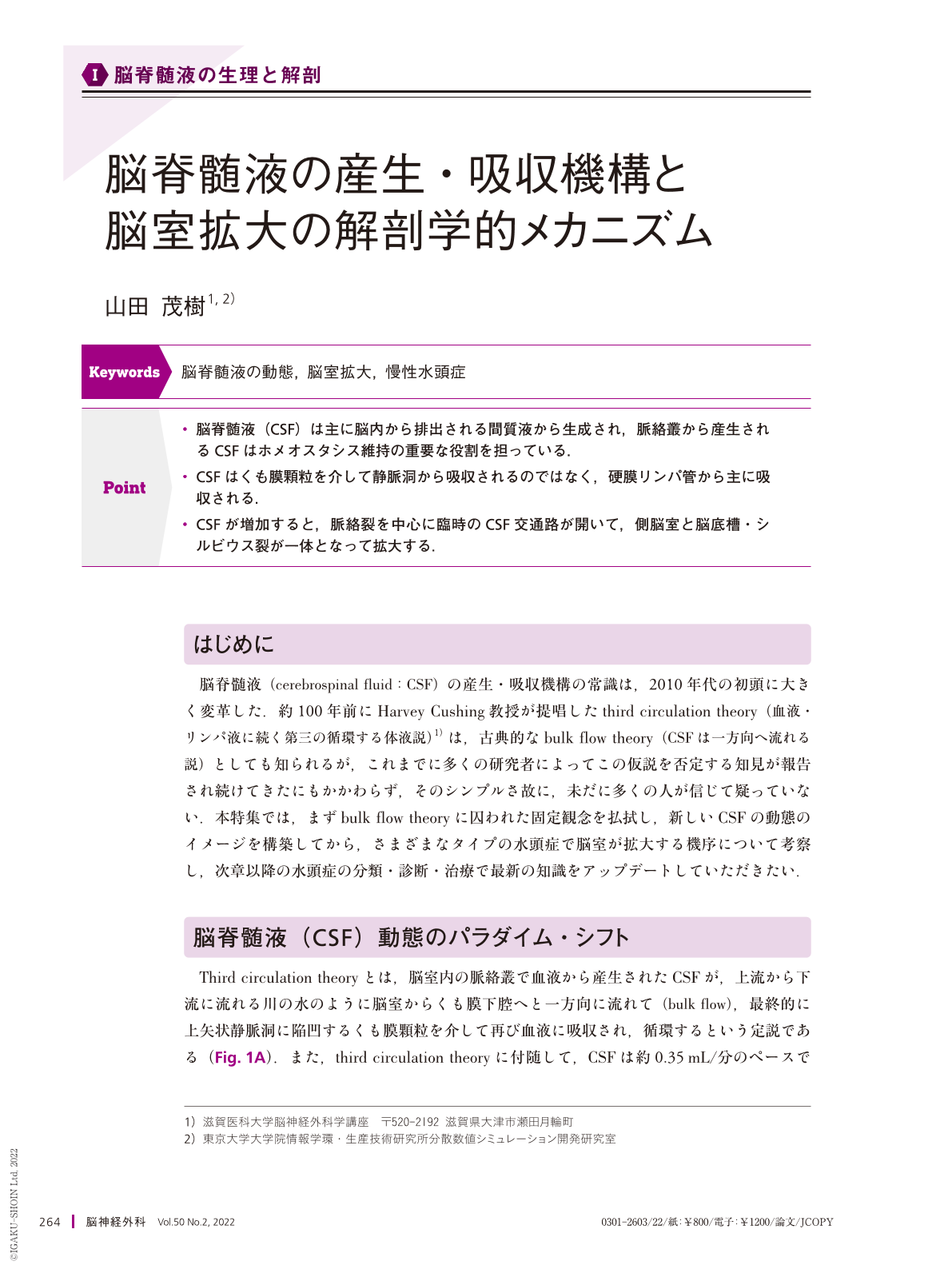Japanese
English
- 有料閲覧
- Abstract 文献概要
- 1ページ目 Look Inside
- 参考文献 Reference
Point
・脳脊髄液(CSF)は主に脳内から排出される間質液から生成され,脈絡叢から産生されるCSFはホメオスタシス維持の重要な役割を担っている.
・CSFはくも膜顆粒を介して静脈洞から吸収されるのではなく,硬膜リンパ管から主に吸収される.
・CSFが増加すると,脈絡裂を中心に臨時のCSF交通路が開いて,側脳室と脳底槽・シルビウス裂が一体となって拡大する.
The concept of cerebrospinal fluid(CSF)production and absorption changed significantly in the early 2010s from “third circulation theory” and “classical bulk flow theory” as follows. First, CSF is mainly produced from the interstitial fluid excreted from the brain; CSF produced by the choroid plexus is important in maintaining homeostasis of the brain. Next, CSF is not absorbed in the venous sinus via the arachnoid granules, but rather in the dural lymphatic vessels. Finally, the ventricles and subarachnoid spaces have several compensatory direct CSF pathways around the attachment of the choroid plexus other than the foramina of Luschka and Magendie. Because of the compensatory direct CSF pathways, the lateral ventricles and the basal cistern are enlarged simultaneously in idiopathic normal pressure hydrocephalus(iNPH). Due to the decrease in brain volume with aging, the average total intracranial CSF volume increases from approximately 150 mL at 20 years to approximately 350 mL at 70 years, and further increases by approximately 50-100 mL to above 400 mL in patients with iNPH. CSF movement is composed of a steady flow produced by the rhythmic wavy movement of motile cilia on the ventricular surface and the dynamic pulsatile flow produced by the pulsation of the cerebral arteries or brain, respiration, and head movement. In general, this pulsatile CSF flow decreases with aging but increases at the opening of the foramen of Magendie and causes the ventricles to expand in iNPH.

Copyright © 2022, Igaku-Shoin Ltd. All rights reserved.


